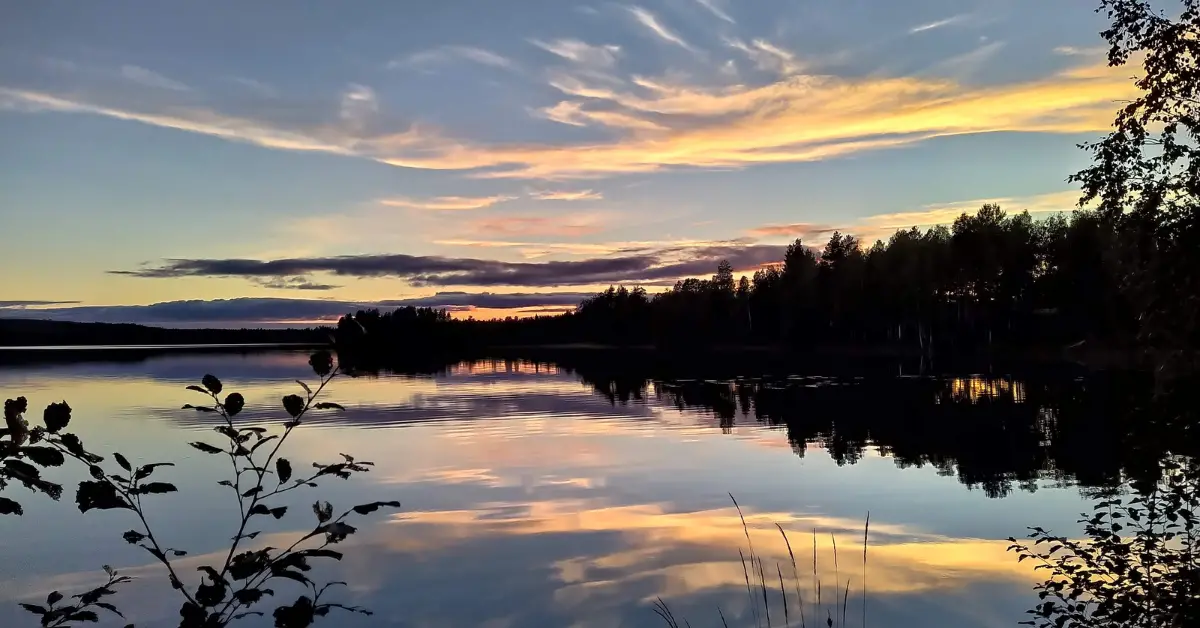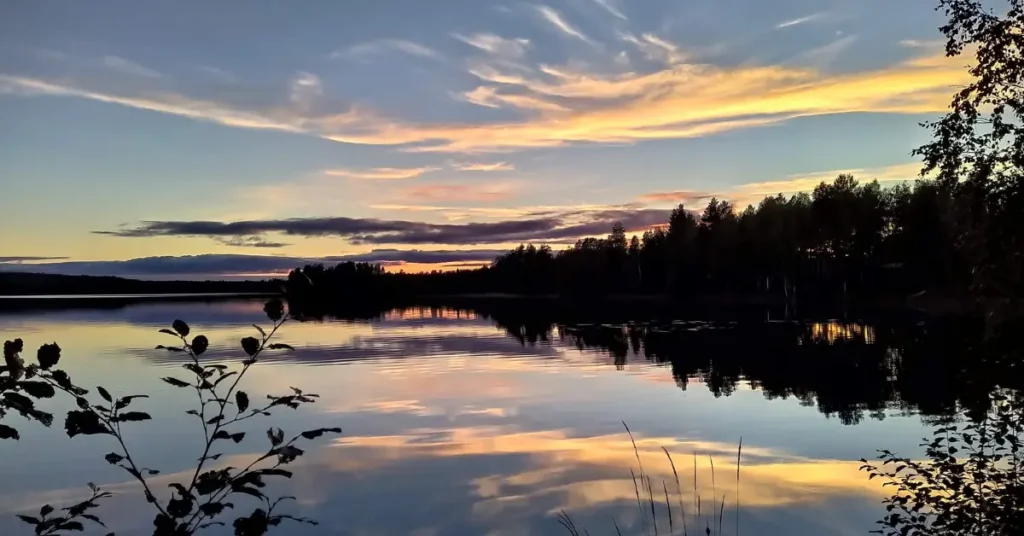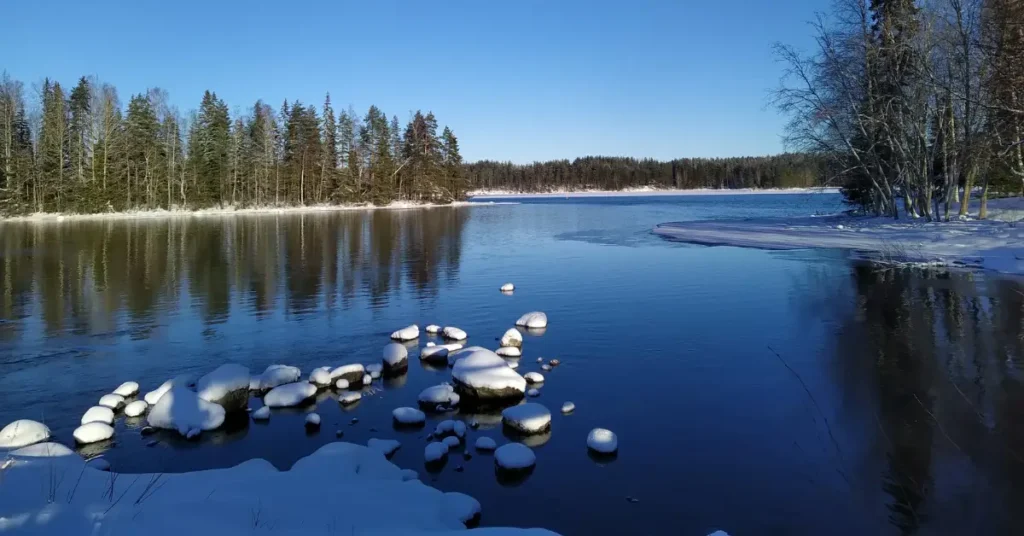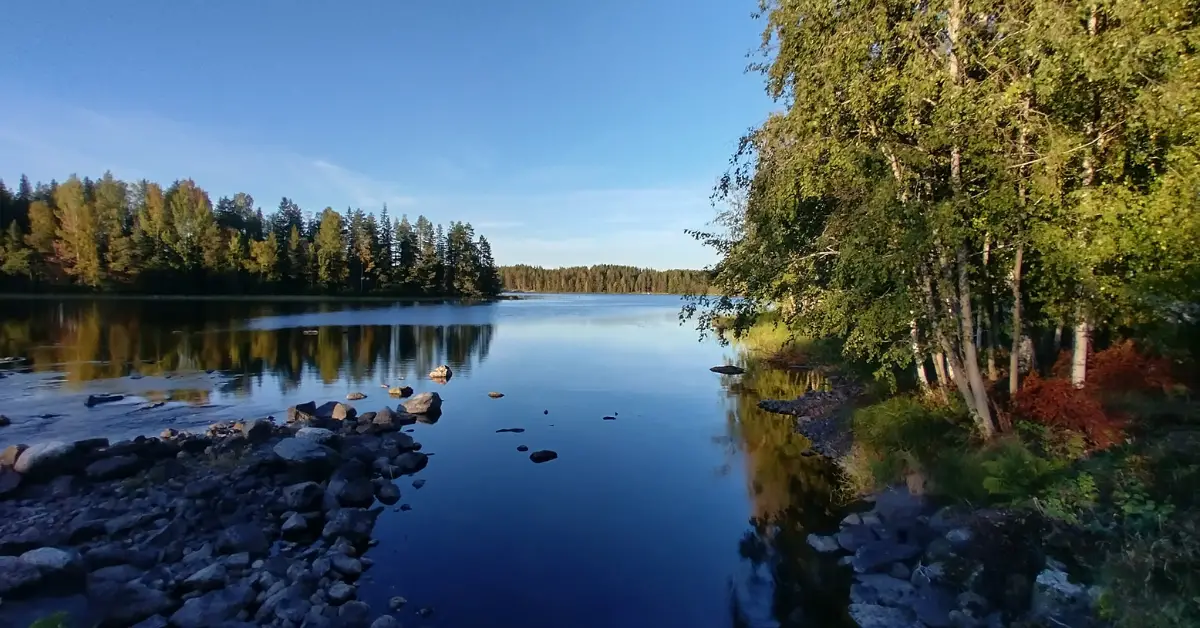Welcome to Finland's Most Enchanting Birding Season
Summer in Finland transforms the landscape into a birding paradise unlike anywhere else in Europe. From June through July, the country basks in the ethereal glow of the midnight sun, creating a unique environment where bird activity extends around the clock.
This is when Finland’s wilderness truly comes alive – forests echo with the songs of countless species, wetlands teem with breeding waterfowl, and the Arctic regions offer encounters with birds found nowhere else on the continent.
The long daylight hours mean you can bird from early morning well into what would traditionally be evening, maximizing your chances of spotting Finland’s most sought-after species.
Whether you’re hoping to witness the spectacular lekking displays that continue from spring, track down elusive forest dwellers, or explore the pristine wilderness of Lapland, summer offers unparalleled opportunities for both novice and experienced birders.

What Makes Summer Special in Finland?
The Midnight Sun Advantage
In northern Finland, the sun doesn’t set from mid-May to late July, while southern regions enjoy up to 19 hours of daylight. This extended light allows for:
- Round-the-clock birding opportunities – many species remain active well into the traditional “night” hours
- Extended dawn and dusk choruses that seem to merge into one continuous symphony
- Better photography conditions with soft, golden light lasting for hours
- Flexibility in planning – you’re not constrained by traditional daylight hours
Peak Breeding Season Activity
Summer coincides with the height of breeding season, meaning:
- Increased vocal activity as birds establish territories and attract mates
- Stunning breeding plumages at their most vibrant
- Fascinating behavioral observations including courtship displays, nest-building, and feeding activities
- Family groups with adults accompanied by their young, offering excellent learning opportunities
Accessible Wilderness
Finland’s excellent infrastructure and the famous “Everyman’s Right” (jokamiehenoikeus) make summer the ideal time to explore:
- Well-maintained trails and bird-watching towers
- Comfortable camping and accommodation options
- Reliable weather conditions for extended outdoor activities
- Easy access to remote locations via Finland’s extensive road network

Prime Summer Species: Your Target list

Forest Specialists
Eastern Taiga Gems The ancient forests of eastern Finland harbor some of Europe’s most coveted species:
Red-flanked Bluetail (Tarsiger cyanurus): This stunning Asian migrant breeds in the mature spruce forests of Karelia and eastern Finland. Males sport brilliant blue upperparts and distinctive orange flanks. Best found in areas with plenty of deadwood and undergrowth.
Siberian Jay (Perisoreus infaustus): These charismatic, fluffy-plumaged corvids are year-round residents but are most active and easier to spot during summer breeding season. Look for their distinctive whistling calls in the deep taiga.
Siberian Tit (Poecile cinctus): Slightly larger than other tits, with distinctive brown caps and fluffy appearance. They’re curious birds that often approach observers, especially in mixed feeding flocks.
Woodland Treasures

Capercaillie (Tetrao urogallus): While famous for spring lekking, summer offers opportunities to observe family groups. These massive forest grouse require quiet, patient observation.
Hazel Grouse (Tetrastes bonasia): More secretive than their larger cousins, these beautifully marked birds prefer dense mixed forests with rich understory.
Three-toed Woodpecker (Picoides dorsalis): Look for areas with recent bark beetle activity or storm-damaged spruce forests. Their methodical pecking creates distinctive rectangular holes.
Wetland Wonders
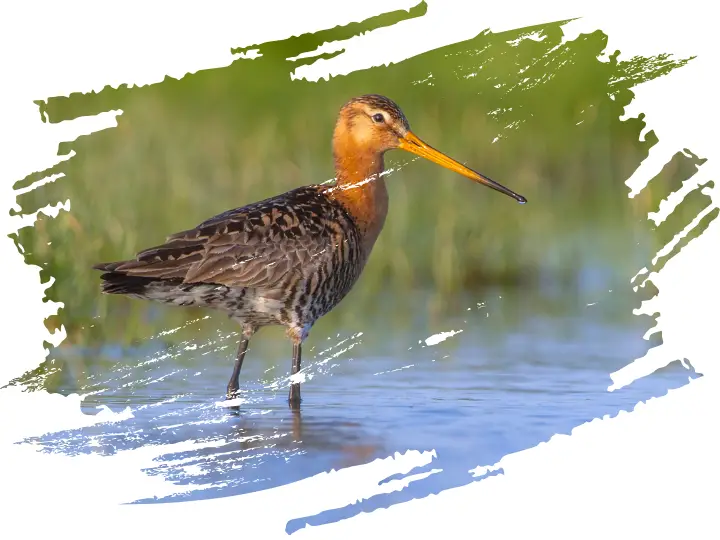
Liminka Bay Specialties Finland’s premier wetland destination offers exceptional summer birding:
Terek Sandpiper (Xenus cinereus): One of Finland’s rarest breeding waders, with just a few pairs nesting at Liminka Bay. Distinguished by their slightly upturned bills and orange-yellow legs.
Black-tailed Godwit (Limosa limosa): These elegant waders display stunning rusty-red breeding plumage and engage in spectacular aerial displays over the meadows.
Citrine Wagtail (Motacilla citreola): An extremely rare breeder in Finland, occasionally found in wet meadows around Liminka Bay.
Coastal and Wetland Residents
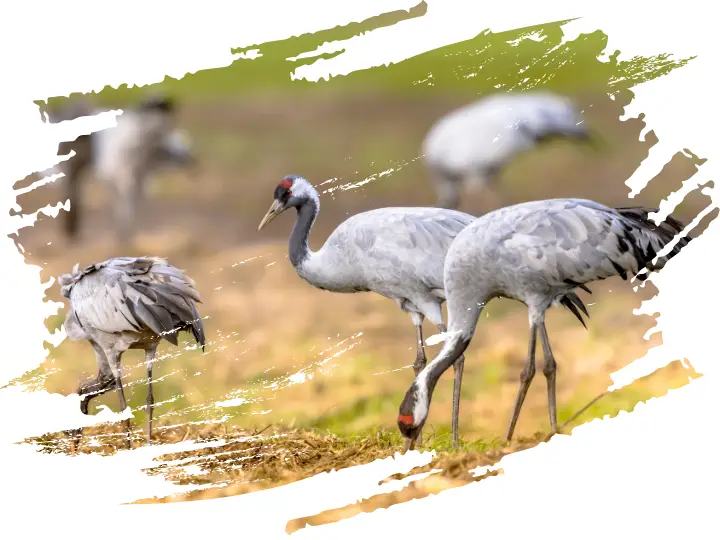
Bittern (Botaurus stellaris): Their distinctive booming calls echo across reedbeds during summer evenings. Exercise extreme caution around nesting areas.
Marsh Harrier (Circus aeruginosus): These impressive raptors patrol wetlands with their characteristic low, tilting flight. Summer is ideal for observing their hunting techniques.
Common Crane (Grus grus): While famous for migration periods, breeding pairs and non-breeding summering birds offer excellent observation opportunities.
Arctic Specialists (Lapland)
Fell and Tundra Birds

Dotterel (Charadrius morinellus): These charming plovers breed on the highest fells, where females are more colorful than males. They’re remarkably approachable but require respectful observation.
Ptarmigan (Lagopus muta): Look for these Arctic grouse on the highest, most barren fells. Summer plumage shows a beautiful mottled pattern of brown and white.
Bluethroat (Luscinia svecica): Males display brilliant blue throat patches with distinctive white or red central spots. They prefer willow scrub in wet areas.
Broad-billed Sandpiper (Calidris falcinellus): A specialized wader of northern bogs and wet tundra, distinguished by their distinctive bill shape and intricate breeding plumage.
White-tailed Eagle (Haliaeetus albicilla): Finland’s conservation success story. These magnificent eagles are increasingly common around coastlines and large lakes.
Golden Eagle (Aquila chrysaetos): Resident in Lapland’s fell country, where they soar on thermals above the vast wilderness.
Gyrfalcon (Falco rusticolus): The Arctic’s premier falcon occasionally breeds in northern Lapland. Extremely rare and requires expert local knowledge to locate.
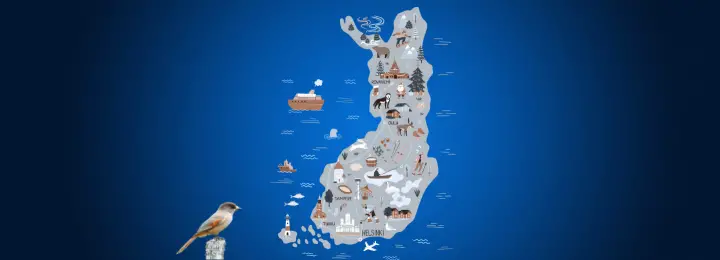
Essential Summer Birding Regions
Here’s a seasonal breakdown of what birders can expect throughout spring:
Liminka Bay (Liminganlahti) – The Crown Jewel
Location: Near Oulu, Northern Ostrobothnia Why Visit: Liminka Bay is the number one bird watching spot in Finland, offering over 200 species in a relatively compact area.
What to Expect:
- Five dedicated bird-watching towers providing excellent vantage points
- Virkkula birdwatching tower is the most popular one at Liminka Bay. The great two-storey birdwatching tower opens a wide view across Liminka Bay
- Extensive reed beds, coastal meadows, and shallow bays
- White-tailed Eagle and Marsh Harrier breed here, many migrants rest, and summering juvenile Common Crane and Whooper Swan are expected
Target Summer Species:
- Terek Sandpiper (Finland’s rarest breeding wader)
- Black-tailed Godwit in stunning breeding plumage
- Four species of Harrier breed annually around the Liminka Bay area, so with luck we may see not only Marsh and Hen, but also Montagu´s and Pallid Harrier
- Bittern (listen for their booming calls at dawn and dusk)
- Various tern species including Caspian Tern
Practical Tips:
- Visit the Visitor Centre first for current sightings information
- Early morning (4-8 AM) and late evening offer the best activity
- Bring a spotting scope for distant observations
- Weather-appropriate clothing essential, even in summer

Oulanka National Park – The Taiga Experience
Location: Kuusamo, near the Russian border Why Visit: Classic old-growth taiga forest harboring Finland’s most sought-after eastern species.
What to Expect:
- Ancient spruce forests with abundant deadwood
- Crystal-clear streams and small lakes
- Well-maintained hiking trails with strategic viewing points
- Visitor center with up-to-date wildlife information
Target Summer Species:
- Red-flanked Bluetail (the park’s most famous resident)
- Siberian Jay and Siberian Tit
- White-throated Dippers along the streams
- Three-toed Woodpecker in beetle-damaged areas
- Capercaillie and Hazel Grouse in dense forest sections
Practical Tips:
- The Karhunkierros Trail offers excellent birding opportunities
- Early morning is crucial for forest birding
- Move slowly and listen carefully – many species are heard before they’re seen
- Mosquito repellent is absolutely essential
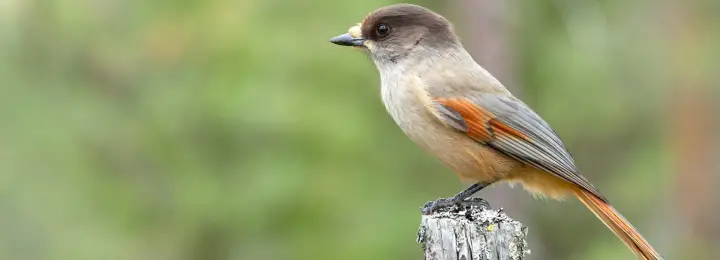
Finnish Lapland – Arctic Wilderness
Location: Utsjoki, Inari, and surrounding wilderness areas Why Visit: Experience Arctic birding under the midnight sun with species found nowhere else in Europe.
What to Expect:
- Vast open fells and tundra landscapes
- Stunted birch forests and extensive wetlands
- Complete midnight sun from mid-May to late July
- Pristine wilderness with minimal human impact
Target Summer Species:
- Dotterel on the highest fells
- Ptarmigan in rocky, barren areas
- Bluethroat in willow scrub near water
- Broad-billed Sandpiper in northern bogs
- Golden Eagle soaring over fell country
- Gyrfalcon (extremely rare, requires expert guidance)
Practical Tips:
- Weather can change rapidly; pack layers and waterproof gear
- GPS navigation recommended in remote areas
- Respect Sámi cultural sites and reindeer herding areas
- Consider guided tours for rare species like Gyrfalcon
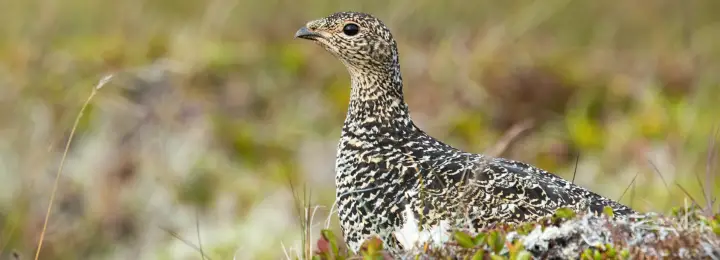
Helsinki Region & Southern Coast – Urban Wilderness
Location: Vanhankaupunginlahti, Viikki, and surrounding areas Why Visit: World-class birding within easy reach of Finland’s capital.
What to Expect:
- Accessible wetlands and coastal areas
- Mix of urban and natural environments
- Excellent infrastructure and facilities
- Great for beginners and those with limited time
Target Summer Species:
- Breeding waterfowl including various duck species
- Reed-dwelling species like Reed Warbler and Sedge Warbler
- White-tailed Eagle increasingly common
- Various gull and tern species along the coast
Practical Tips:
- Easily accessible by public transport
- Well-maintained paths suitable for all mobility levels
- Excellent for photography with good lighting conditions
- Information boards in multiple languages

Archipelago National Park – Coastal Paradise
Location: Southwest Finland, accessible from Turku Why Visit: Unique coastal and archipelago environment with distinctive bird communities.
What to Expect:
- Thousands of islands and skerries
- Seabird colonies and coastal species
- Traditional archipelago culture and landscape
- Ferry connections to major islands
Target Summer Species:
- Various gull species including Lesser Black-backed Gull
- Common Eider and other sea ducks
- White-tailed Eagle coastal populations
- Osprey fishing in shallow bays
- Arctic Tern colonies (observe from respectful distance)
Practical Tips:
- Ferry schedules vary; check connections in advance
- Sea conditions can affect birding opportunities
- Respect nesting seabird colonies – maintain appropriate distances
- Combination of land-based and boat-based birding optimal

Recommended Birding Routes & Itineraries

The Classic 7-Day Summer Circuit
Day 1-2: Helsinki region (Vanhankaupunginlahti, Viikki) Day 3-4: Liminka Bay and Oulu surroundings Day 5-6: Oulanka National Park and Kuusamo Day 7: Return via central Finland forests
The Lapland Arctic Adventure (5 days)
Day 1: Arrival in Rovaniemi, local forest birding Day 2-3: Utsjoki and fell country Day 4: Inari wilderness areas Day 5: Return journey with wetland stops
The Southern Comfort Tour (4 days)
Day 1: Helsinki and surroundings Day 2: Archipelago National Park Day 3: Hanko Peninsula Day 4: Return via inland forests
A YouTube of the Nature & Wildlife photographer Petri Koivisto
Essential Practical Information
What to Pack for Summer Birding
Optical Equipment:
- Quality binoculars (8×42 or 10×42 recommended)
- Spotting scope for wetland birding
- Tripod for extended observation sessions
- Camera with telephoto lens
Clothing Essentials:
- Layered clothing system for variable weather
- Waterproof jacket and pants
- Insect-proof clothing (long sleeves, pants)
- Comfortable, waterproof hiking boots
- Warm hat and gloves (nights can be cool even in summer)
- Sun hat and sunglasses for bright conditions
Field Equipment:
- Field guide to Finnish birds
- Notebook and pen for recording observations
- Smartphone with birding apps (eBird, Merlin)
- Power bank for device charging
- First aid kit
- Headlamp or flashlight (for early morning starts)
Insect Protection (Crucial in Finnish summer):
- High-DEET insect repellent
- Head net for extreme mosquito conditions
- Long-sleeved shirts and pants
- Consider permethrin-treated clothing
Best Times for
Summer Birding
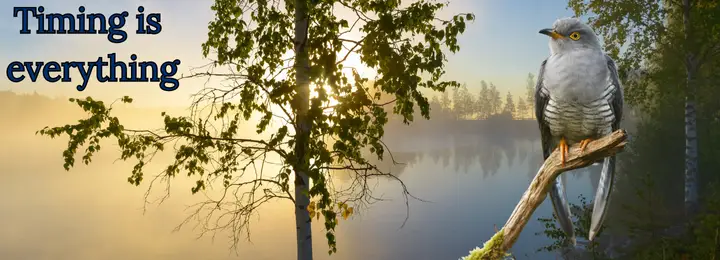
Daily Timing:
- Peak Activity: 4:00 AM – 9:00 AM
- Secondary Peak: 7:00 PM – 11:00 PM (in southern Finland)
- Midday: Generally quieter, good for raptors and water birds
- Midnight Sun Advantage: Activity can continue around the clock in northern regions
Monthly Variations:
- June: Peak breeding season activity, best for displays and territorial behavior
- July: Family groups active, young birds learning to forage
Early August: Some species begin post-breeding movements
Getting Around Finland

Transportation Options:
- Rental Car: Most flexible option for accessing remote birding sites
- Public Transport: Good for major destinations like Liminka Bay
- Organized Tours: Excellent for rare species and remote locations
- Domestic Flights: Efficient for reaching Lapland from southern Finland
Recommended Routes:
- Highway 4 (E75): Direct route from Helsinki to Lapland via Oulu
- Highway 6: Eastern route through prime taiga forests
- Coastal routes: Excellent for seabird and coastal species
Accommodation Tips

Types of Accommodation:
- Hotels: Available in major towns, book early for summer season
- Wilderness Huts: Basic accommodations in national parks
- Camping: Excellent options with good facilities
- Wilderness Camping: Permitted under Everyman’s Right (follow Leave No Trace principles)
Strategic Locations:
- Oulu: Perfect base for Liminka Bay
- Kuusamo: Gateway to Oulanka National Park
- Inari: Central location for Lapland birding
- Helsinki: Excellent urban birding opportunities
Understanding Finnish Birding Ethics & Regulations

The Everyman’s Right (Jokamiehenoikeudet)
Finland’s unique legal concept allows free access to nature with important responsibilities:
What You Can Do:
- Walk freely in forests and natural areas
- Camp temporarily in suitable places
- Pick berries and mushrooms
- Take photos of wildlife
What You Must Not Do:
- Disturb nesting birds or wildlife
- Enter private properties near homes
- Light fires except in designated areas
- Leave any trace of your visit
- Take eggs, young birds, or nests
Specific Summer Birding Ethics
Nesting Season Considerations:
- Maintain greater distances from potential nesting areas
- Avoid using playback near likely breeding territories
- Never approach ground nests, especially those of grouse and waders
- Report rare species sightings responsibly to avoid overcrowding
Photography Ethics:
- Wildlife welfare always comes before the photograph
- Use long lenses to maintain respectful distances
- Never manipulate the environment around nests
- Respect other birders’ experiences
Protected Areas and Regulations
National Parks:
- Stay on marked trails where indicated
- Follow specific park regulations
- Obtain necessary permits for research or extensive photography
- Respect visitor center guidelines and recommendations
Private Lands:
- While Everyman’s Right applies, show extra consideration
- Close gates behind you
- Avoid areas during sensitive farming periods
- Respect private property boundaries near buildings
Weather Considerations & Safety
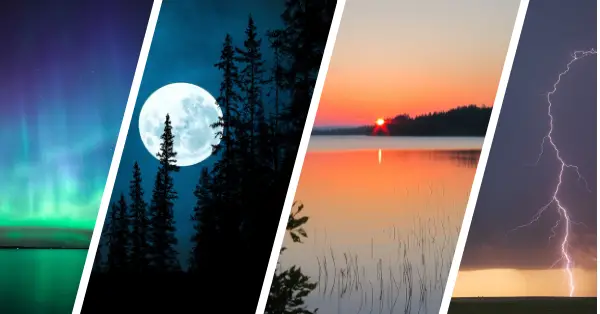
Summer Weather Patterns
What to Expect:
- Temperature Range: 15-25°C (59-77°F) in southern Finland, 10-20°C (50-68°F) in Lapland
- Rainfall: Frequent brief showers, occasional longer periods of rain
- Wind: Generally moderate, stronger along coasts
- Humidity: Can be high, especially around wetlands
Regional Variations:
- Southern Finland: Warmer, more stable conditions
- Central Regions: Variable weather, quick changes possible
- Lapland: Cooler temperatures, potential for unseasonal weather
Safety Considerations

Wilderness Safety:
- Inform others of your birding plans and expected return
- Carry appropriate emergency equipment
- Know basic first aid
- Understand signs of hypothermia, even in summer
- Carry emergency communication device for remote areas
Wildlife Encounters:
- Brown bears are present but encounters are extremely rare
- Make noise in dense forest to avoid surprising animals
- Properly store food when camping
- Understand elk/moose behavior during summer months
- Be aware of nesting bird defensive behaviors
Health Considerations
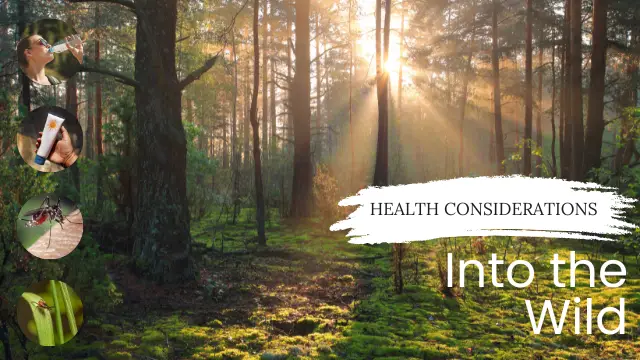
Insect-Borne Concerns:
- Tick-borne encephalitis (TBE): Consider vaccination for extended stays
- Check for ticks after forest birding
- Proper insect repellent reduces disease transmission risk
- Be aware of local health recommendations
Sun Protection:
- UV levels can be intense with extended daylight
- Snow reflection in mountain areas increases exposure
- Sunscreen, hat, and sunglasses essential
Stay hydrated during long birding sessions
Making the Most of Your Visit: Expert Tips
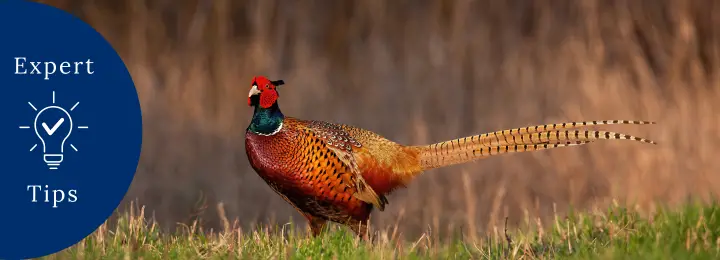
Planning Your Trip
Research and Preparation:
- Check recent sightings on eBird or local birding forums
- Connect with local birding communities online
- Download offline maps for remote areas
- Learn key bird sounds before your visit
- Understand seasonal timing for target species
Booking Considerations:
- Summer is peak season – book accommodations early
- Car rentals in high demand, especially 4WD vehicles
- Some guided tours book months in advance
- Consider travel insurance covering wilderness activities
Maximizing Your Birding Success
Local Knowledge:
- Connect with Finnish birding groups and online forums
- Visit local visitor centers for current conditions
- Chat with other birders encountered in the field
- Use social media birding groups for real-time information
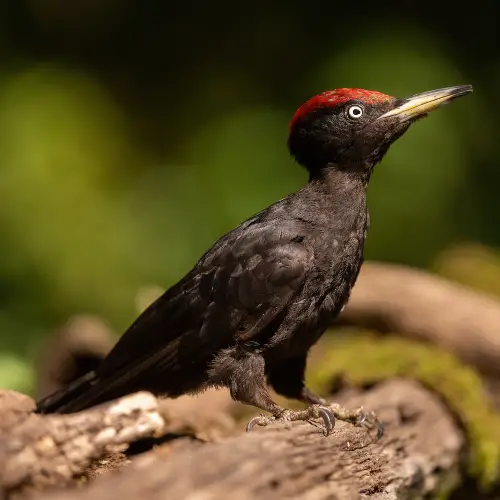
Local Knowledge:
- Connect with Finnish birding groups and online forums
- Visit local visitor centers for current conditions
- Chat with other birders encountered in the field
- Use social media birding groups for real-time information
Technology Tools:
- eBird for logging sightings and checking recent observations
- Merlin Bird ID for song identification
- Weather apps for planning daily activities
- Offline GPS maps for navigation in remote areas
- Bird identification apps with Finnish species
Field Techniques:
- Learn to identify common species by sound
- Practice patience – forest birding requires time
- Use different techniques: sitting quietly vs. active searching
- Pay attention to habitat preferences
Note environmental cues that indicate bird activity
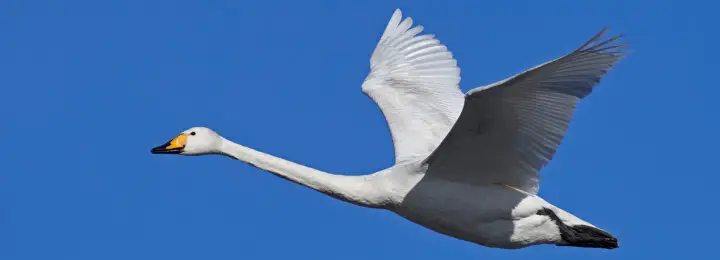
Special Events & Opportunities
Summer Birding Events
Note: Specific dates for 2026 events are not yet available. Check local birding organizations and visitor centers for updated information.
Annual Events to Watch For:
- Midnight Sun Birding Festivals: Various locations in northern Finland typically host special events celebrating summer birding
- Guided Night Birding Tours: Taking advantage of the midnight sun for extended observation opportunities
- Photography Workshops: Specialized sessions for capturing summer breeding behaviors
- Family Birding Events: Educational programs designed for visitors with children
Research and Citizen Science Opportunities
Contributing to Conservation:
- eBird Submissions: Your sightings contribute to global bird monitoring
- Finnish Breeding Bird Atlas: Participate in ongoing monitoring efforts
- Migration Monitoring: Some sites offer volunteer opportunities
- Habitat Restoration: Some organizations welcome volunteer assistance
Learning Opportunities:
- Ringing (Banding) Demonstrations: Some research stations offer public viewing
- University Research Projects: Occasionally welcome skilled volunteer assistance
Conservation Project Visits: Learn about ongoing habitat management efforts
Guided Tours vs.
Independent Birding
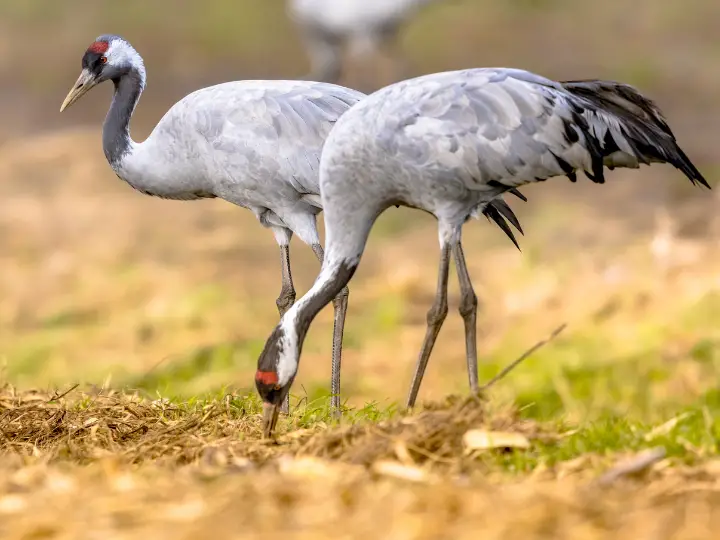
When to Choose Guided Tours
Recommended For:
- First-time visitors to Finland
- Targeting specific rare species (especially owls, Gyrfalcon)
- Limited time available
- Preference for learning from local experts
- Interest in accessing private lands or special locations
Types of Guided Experiences:
- Full-day Tours: Comprehensive experiences with multiple locations
- Species-specific Tours: Focused on particular birds or groups
- Multi-day Adventures: Complete packages including accommodation and meals
- Photography Tours: Specialized for serious bird photographers
Independent Birding Advantages
Best For:
- Experienced birders familiar with European species
- Flexible scheduling preferences
- Budget-conscious travelers
- Those who enjoy the planning and discovery process
- Extended stays allowing for patience and persistence
Success Tips for Independent Birders:
- Invest time in pre-trip research
- Connect with local birding communities online
- Use technology tools effectively
- Be prepared for variable weather conditions
- Maintain realistic expectations for rare species
Conservation Context:
Why Summer Matters
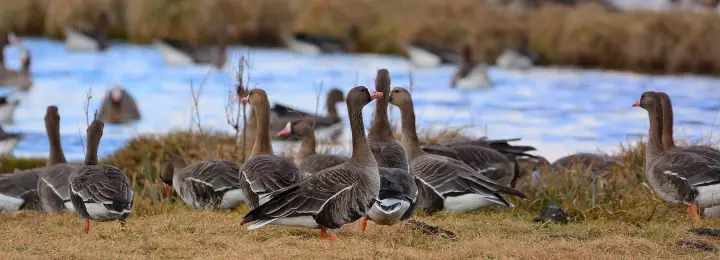
Understanding Finnish Bird Conservation
Success Stories:
- White-tailed Eagle Recovery: From near extinction to thriving populations
- Wetland Restoration: Ongoing efforts to maintain critical habitats
- Forest Management: Balancing commercial forestry with biodiversity conservation
- International Cooperation: Cross-border efforts for migratory species protection
Current Challenges:
- Climate Change Impacts: Shifting species ranges and breeding timing
- Habitat Pressure: Development and land-use changes
- Invasive Species: Monitoring and management of non-native species
- Pollution: Ongoing efforts to minimize environmental contamination
How Birders Can Help
Responsible Tourism:
- Choose eco-friendly accommodations and tour operators
- Practice Leave No Trace principles
- Support local conservation organizations
- Respect wildlife and habitats
- Share knowledge and experiences responsibly
Data Contribution:
- Submit all sightings to eBird and local databases
- Participate in citizen science projects
- Report unusual sightings to local authorities
- Document and report any conservation concerns observed
Conclusion: Embrace the Magic of Finnish Summer Birding

Summer in Finland offers a birding experience unlike anywhere else in the world. The combination of the midnight sun, pristine wilderness, and unique species makes every moment in the field potentially extraordinary. Whether you’re standing in silent anticipation in an ancient taiga forest, watching the elegant flight of a White-tailed Eagle over a pristine lake, or marveling at the Arctic specialties of Lapland’s fell country, Finland’s summer provides memories that last a lifetime.
The key to success lies in embracing the unique rhythm of Finnish summer – taking advantage of the extended daylight, respecting the wilderness and its inhabitants, and remaining open to the unexpected encounters that make birding such a rewarding pursuit. From the beginner taking their first steps into the world of birding to the experienced traveler adding Nordic specialties to their life list, Finland’s summer birding season offers something truly special for everyone.
Plan your visit with patience, respect, and wonder – Finland’s birds and wild places are waiting to share their secrets with those who take the time to listen and observe. The midnight sun illuminates not just the landscape, but also the connections between all living things in this remarkable northern wilderness.
Remember: This information is based on current knowledge as of 2025.
Always check with local authorities, visitor centers, and recent birding reports for the most up-to-date conditions and recommendations before your visit.
